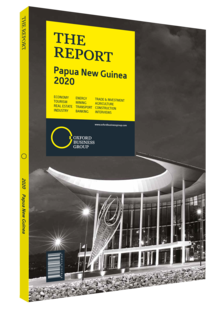Jeremy Norton, General Manager, Tower Insurance: Interview

Interview: Jeremy Norton
How has pressure on the global reinsurance price impacted Papua New Guinea’s insurance sector?
JEREMY NORTON: Reinsurance costs have increased following adverse climate events, in particular in Caribbean and Pacific countries. Reinsurers have reduced their capacity in higher-risk markets – like PNG – transferring it instead to lower-risk geographies. As such, it has become more expensive for insurance companies in the country to procure reinsurance, leading to a decrease in underwriting capacities. This limits the growth of the insurance industry.
Moreover, a large proportion of overall premium is placed offshore. Some regulatory requirements give preference to insurance companies registered in PNG over international entities, but domestic insurers do not have the capacity to underwrite all risks in the economy. There has been an increase in co-insurance arrangements, whereby multiple insurers each underwrite a portion of the same risk.
Insurance companies registered in PNG buy some of their reinsurance offshore. The shortage of foreign exchange can make the timely remittance of reinsurance premium overseas problematic, which can put pressure on insurers’ balance sheets. It is possible that reinsurance prices will drop again; however, this will depend on the global incidence of events such as earthquakes, cyclones and floods.
Where do you see potential for digital innovation to progress in the insurance market?
NORTON: Risk mapping and geocoding are increasingly favoured by insurers to help them make better decisions. These strategies do not guarantee responsible and profitable growth, but they do provide information and insights that lead to more informed underwriting decisions. Improved analysis and understanding of risk can enable insurers to underwrite assets in areas that were previously considered unprofitable. Conversely, it may lead to insurers divesting from assets that are deemed too risky. It may also mean that customers pay a premium based on actual risks in their location, rather than the price being calculated at the aggregate level.
Digital technology can also be used to increase accessibility for customers in remote areas and help businesses, homeowners and drivers insure against unforeseen events. Greater use of apps allows insurers to be more responsive to customers in remote locations by providing them with information, services and the ability to purchase policies. This kind of digital distribution removes some operating costs for insurers and reduces the pressure on premium increases. This is a good outcome for customers.
What economic trends offer growth opportunities for insurers in the country?
NORTON: The government’s focus on assisting small and medium-sized enterprises (SMEs) – and the growth of a middle class with an understanding of financial services products – unlocks opportunities for the insurance industry. These opportunities may take the form of business protection insurance, as well as house, vehicle, medical and life insurance. Over time even modest growth in these segments will have a compounding effect and generate sustainable growth for the industry. SME growth – particularly in rural areas – offers an opportunity for insurers to cover customers who may not have had insurance before, thereby growing the market.
Micro- and parametric insurance products will likely become increasingly available in PNG, providing first-time buyers an entry to insurance. Purchasers of low-premium products may seek more conventional offerings in the future. As such, these insurance structures can be helpful tools to increase penetration. However, because of their low price, the products will make more of an impact when used on a large scale rather than on an individual level.
You have reached the limit of premium articles you can view for free.
Choose from the options below to purchase print or digital editions of our Reports. You can also purchase a website subscription giving you unlimited access to all of our Reports online for 12 months.
If you have already purchased this Report or have a website subscription, please login to continue.

